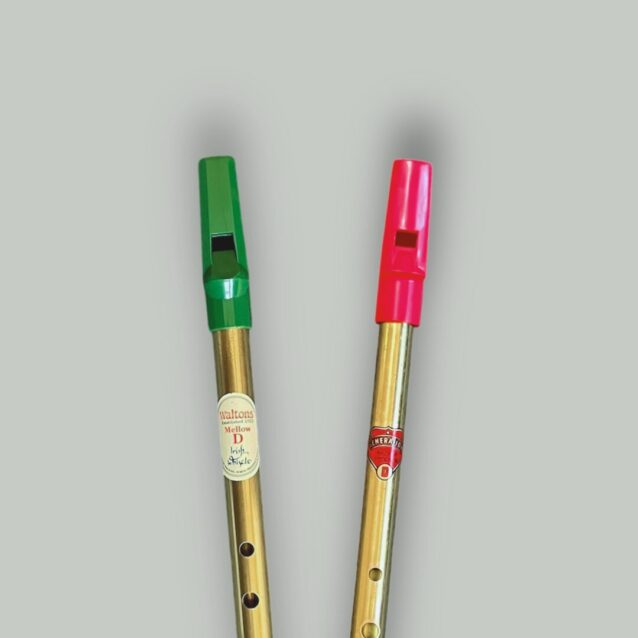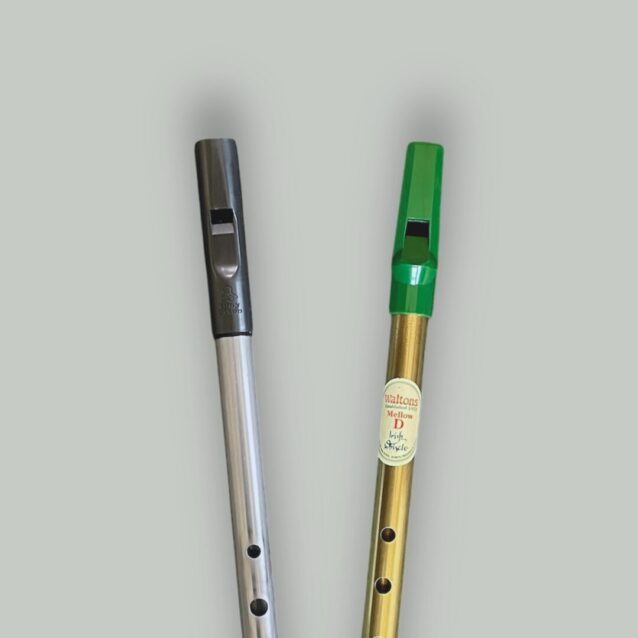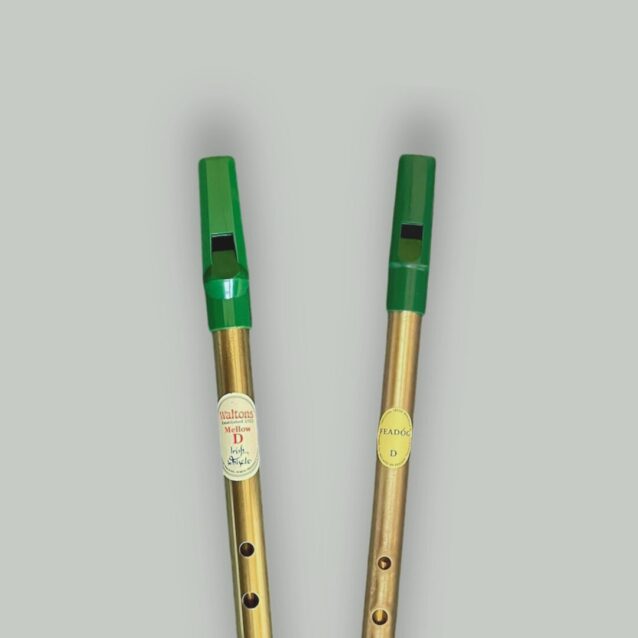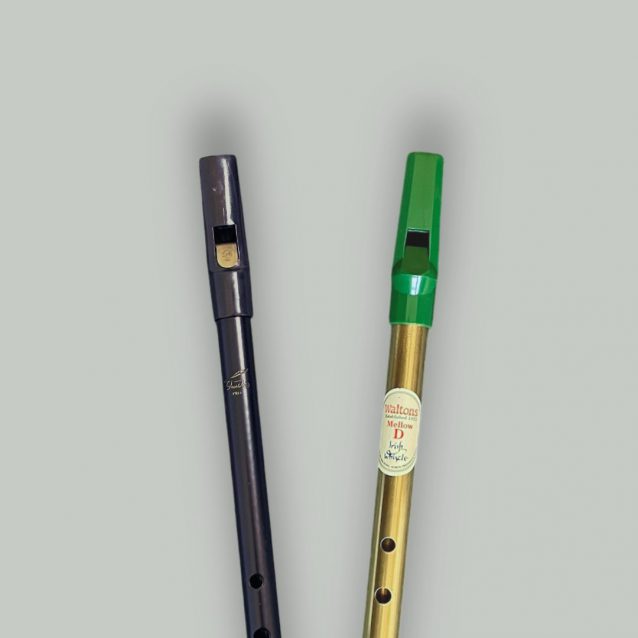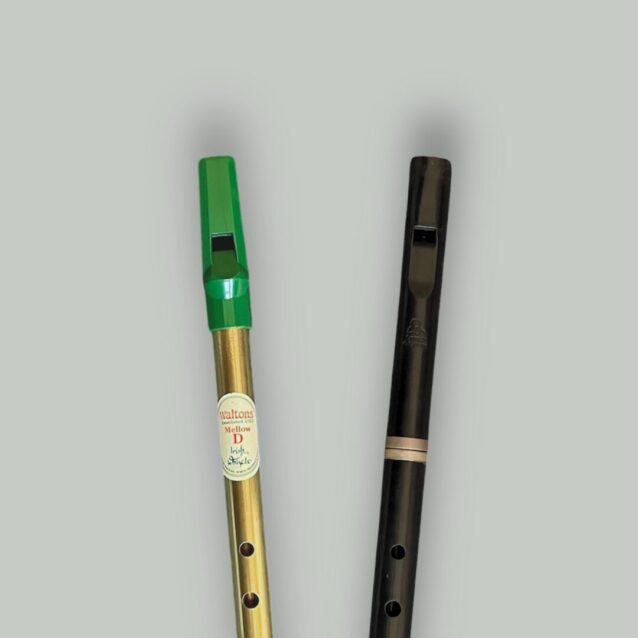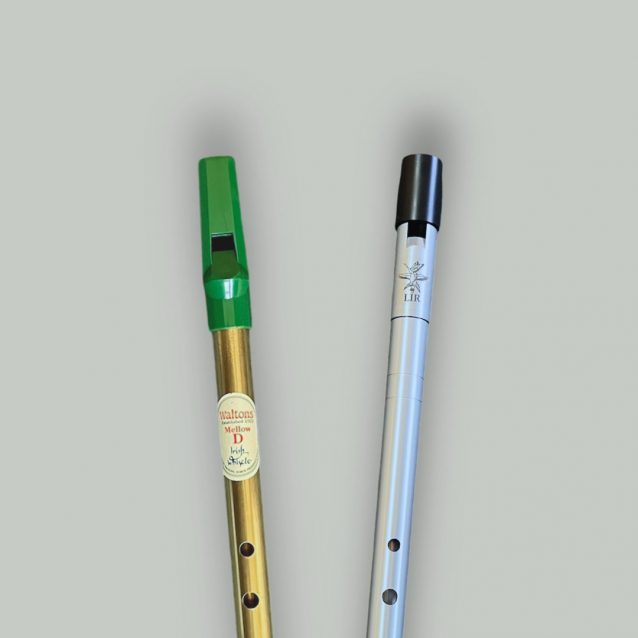Waltons is a long-established Irish brand with deep roots in traditional music. In this review, we’ll take a closer look at their Mellow D model — a whistle that stands out among entry-level options with a few distinct features, which we’ll explore in more detail.
Design & build
| Model: | Waltons “Mellow” |
|---|---|
| Key: | D (high/soprano) |
| Material: | Brass (clear plastic coated) |
| Mouthpiece: | Plastic (green, injection-moulded) |
| Windway type: | Straight |
| Length: | 293 mm (11.53″) |
| Weight: | 38 g (1.34 oz) |
| Bore diameter: | 13 mm (~ 0.51″ or ½ inch) |
| Tuneable: | Not tuneable by default (head can be loosened with hot water) |
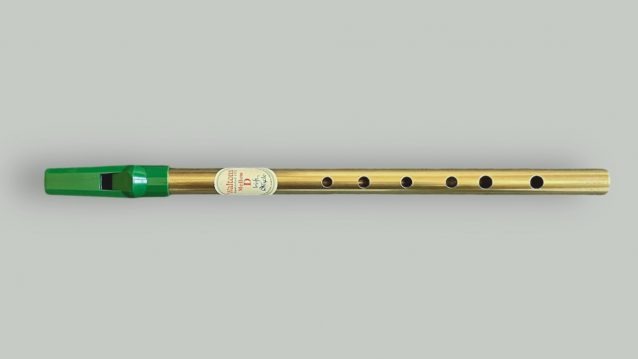
As shown in the images, this model features a classic green plastic mouthpiece with a straight blowing windway, and a cylindrical brass tube — a familiar combination among entry-level whistles. Like most mass-produced beginner models, these are not individually tested or hand-finished, so you may occasionally notice minor differences or small imperfections from one unit to another.
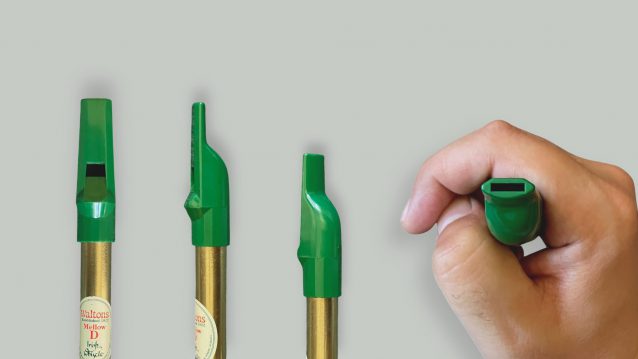
Out of the box, the whistle isn’t tuneable, the head is glued to the body. However, by placing the headjoint in a cup of hot (boiling) water for a few seconds, the glue can loosen enough to gently twist off the head. This makes it possible to fine-tune the whistle by adjusting the head position.
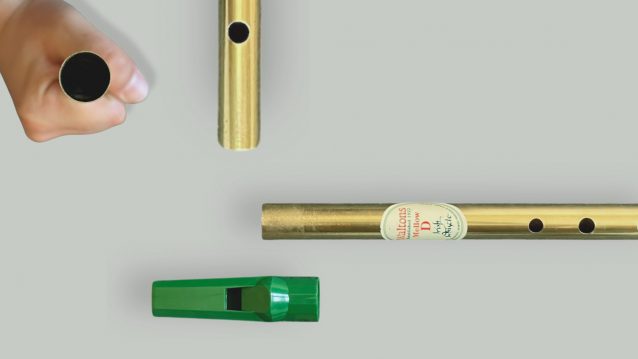
One thing that sets the Waltons Mellow D apart is its slightly wider inner bore compared to both Waltons’ standard model and other popular entry-level whistles like the Generation or Feadóg.
Another notable feature is the clear coating applied over the brass tube. This thin film gives the whistle a shinier finish and helps prevent the typical tarnishing that occurs with bare brass. As a result, the whistle keeps its like-new appearance even after extended use, ideal for players who prefer a clean, golden look without patina and the need for regular maintenance.
Waltons Mellow D – Sound samples and demonstration
The video below includes samples from both octaves, starting with a slow melody and ending with a faster tune to show how the whistle responds in different contexts.
As the name suggests, the tone of the Waltons Mellow D has a soft, slightly airy character, especially noticeable in the lower octave. Like many whistles with a wider bore, the sound is a bit fuller overall (and louder), but ornamentation tends to feel slightly less crisp and responsive. Because of that, this whistle might be a better fit for gentler melodies and ballads rather than fast, ornament-heavy tunes.
Tuning is solid, especially considering this is a budget instrument. The C natural note is also pretty much correct by using the standard “OXX OOO” grip. As mentioned earlier, some variation between individual units is possible, but overall, the whistle is very usable.
One thing we particularly like is how consistent the tone character remains across notes. It’s normal to get a bit more hiss or edge in the upper octave, but the Waltons Mellow manages to stay quite balanced, whether you play softly or give it a bit more push.
How it handles from a player’s perspective
As is often the case with wider bores, it also requires a slightly stronger breath push, especially in the upper octave. However, it’s also louder than many similar models and may be a better fit in situations where you want more volume, such as during sessions.
That said, it holds up well even when overblown, which can actually be helpful for beginners who are still learning breath control, particularly in the second octave. It does require some control, but it’s a bit more forgiving than many whistles in its price range. On the other hand, for players with breath-related health conditions who can’t comfortably push that much air, a lighter-blowing whistle might be a better fit.
On top of that, for players coming from other wind instruments where stronger breath support is the norm, the Waltons Mellow D may feel more natural and familiar than some lighter-blowing beginner models.
Your thoughts?
If you have any questions or thoughts about this whistle, feel free to leave a comment directly under the Waltons tin whistle review video on YouTube. We check and reply regularly, and it’s a great way to share feedback or start a conversation with other players too.
Waltons Mellow whistle comparisons
Below are a few quick sound comparisons between the Waltons Mellow D and other tin whistles. Each clip is recorded using the same microphone and settings to give a fair impression of tone and character, with raw, unprocessed sound.
View more Waltons Mellow comparisons
Please note: due to YouTube’s automatic audio normalization, real volume differences between whistles are effectively removed. That’s actually helpful in this case — since louder sounds are often perceived as better to the human ear on a subconscious level, this allows you to focus more objectively on tone, texture, and response.
Where to buy this whistle
At the time of writing, the Waltons Mellow model is available only in the key of D, while the standard C key basically has the same bore size as the Mellow D.
If you’re interested in picking up this whistle, here are a few trusted places where you can find it. Prices typically range around $10, depending on the shop, region and specific packaging.
- Amazon
- BigWhistle (UK, ships worldwide)
- Waltons Music (Ireland, ships worldwide)
- Waltons Music (USA & Canada)
- Hobgoblin (UK, ships worldwide)

